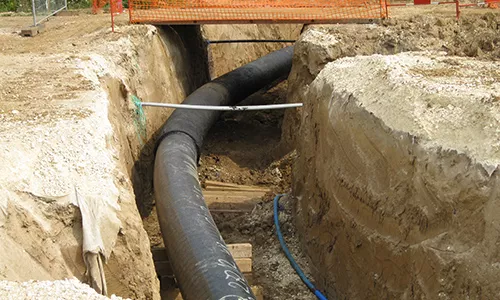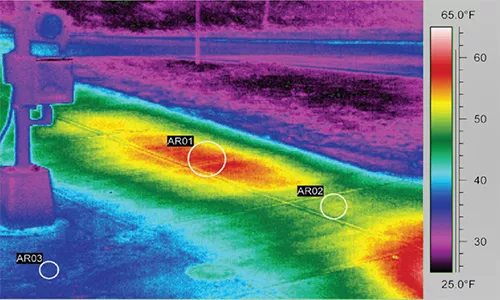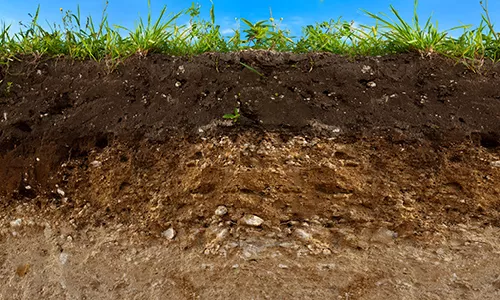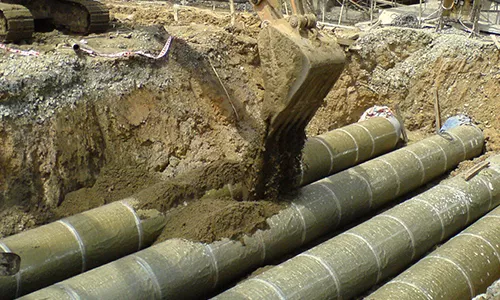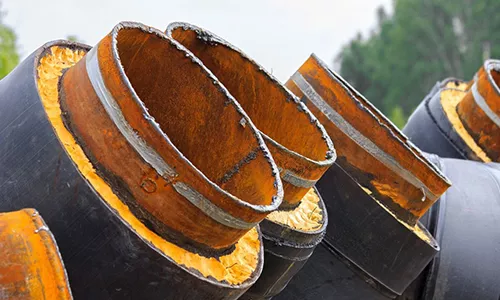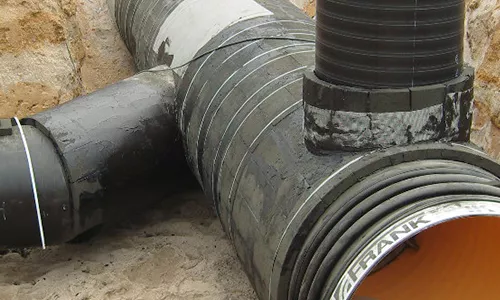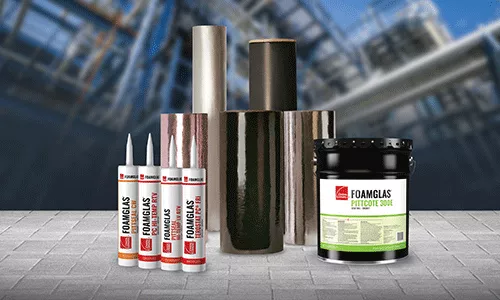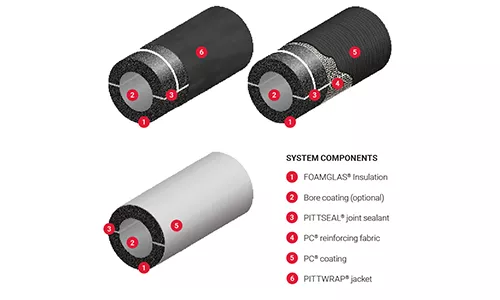Key considerations for direct burial insulation systems
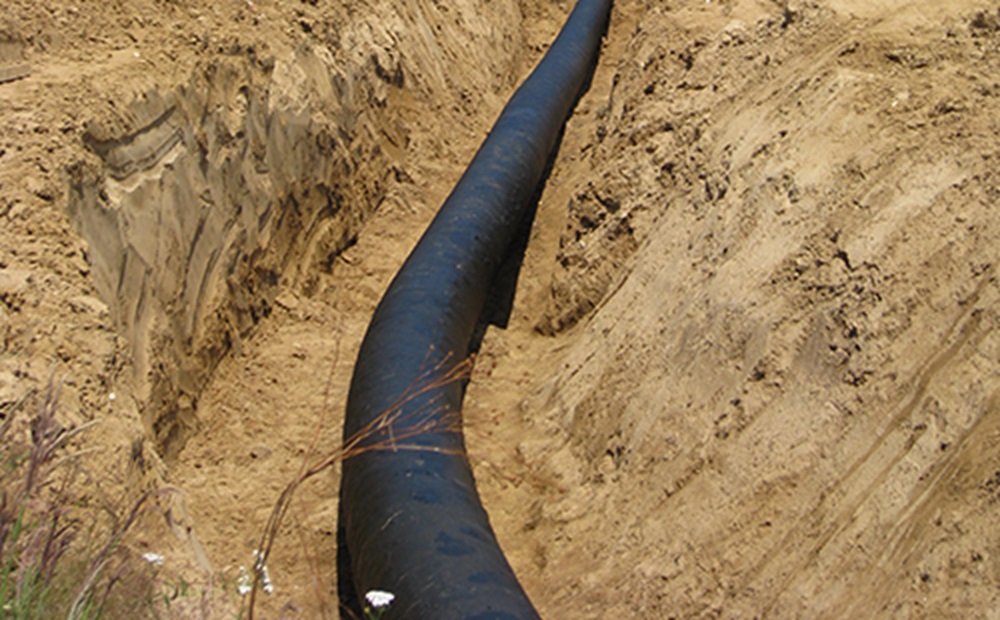
Placing piping underground has been a widely accepted way of designing and installing process piping networks for decades. Underground piping networks have been used to distribute chilled water, hot water and steam or to transport gas or other fuels. Installing piping networks underground offers advantages such as space-saving design, improved personnel protection, reduced risk for mechanical damage, and an additional barrier from the elements; However, unless these piping networks are designed and installed properly, the underground system can have the potential for many hazards.
Direct burial applications
The direct burial of insulated pipelines is often the most practical method of installing underground piping systems. This method eliminates the need for costly tunnels and speeds the installation of the piping system. Buried pipelines and their insulation systems are required to withstand internal hydrostatic pressure, as well as overburden including soil load, traffic, and other external loads. It is not just the piping network that must be designed to withstand these loads, but it is critical that the insulation system also be designed for these service conditions.
The ideal insulation system should meet the mechanical requirements of being buried while also providing long-term insulation efficiency and protection against moisture intrusion which could lead to corrosion related issues. Ignoring these basic considerations may result in problems.
Design considerations
The success of a direct burial system depends highly upon the system chosen, proper design and proper installation. Some of the key considerations which should be addressed by the design professionals prior to selecting an insulation system are:
- Type of system: chilled water, hot water, steam or other
- Operating temperatures of all pipes (hot, cold, constant or cycling)
- Pipe length, diameter, burial depth, number and nature of runouts
- Soil type, bearing strength, electrical potential
- Location of water table
- Control of expansion/contraction
- Other conditions such as traffic loads, depth below road, etc
Thermal requirements for direct burial insulation systems
Although it is conceivable to use direct burial systems for low temperature liquid transport, it is rarely done due to the problems associated with potential freezing and heaving of the ground, especially in the presence of water.
Underground chilled water networks are used in district cooling systems but are almost never used citywide. The low temperature difference makes district cooling distribution costly, so networks are typically built in areas with high cooling demand densities, such as downtowns and commercial areas. The vast majority of direct burial applications are for above ambient piping such as hot water and steam. Thermal requirements for these applications are: limiting the heat transfer for economic reasons, limiting the temperature variations of the fluid between the beginning and the end of the line for process reasons and limiting coating temperature to an acceptable value.
Considerations regarding heat transfer calculations
When calculating the acceptable heat transfer, it is important to consider the influence of the ground thermal conductivity in the calculation of heat transfer and of the insulation outside surface (or coating) temperature. This can be physically explained by the fact that the pipe is insulated by the insulation material and the ground around it.
This means that a low ground thermal conductivity will increase the insulation surface temperature on an above ambient system and will reduce the heat transfer, while a high ground thermal conductivity will decrease the insulation surface temperature and will increase the heat transfer on that system.
The ground thermal conductivity varies with its moisture content which is higher during a wet period than during a dry period.
Moreover, the value can be difficult to accurately measure, particularly when considering a long pipeline going through various zones.
Consequently, many specialists calculate the insulation outside surface temperature with a relatively low thermal conductivity of the ground and the heat transfer with relatively high thermal conductivity of the ground.
Mechanical strength
Providing adequate mechanical strength is key. Direct buried installation systems must sustain high loads, coming from both the static pressure applied by the soil around a pipe as well as from traffic loads and other overburden loads. Therefore, insulation materials with a high compressive strength, and without the need for additional structural protection are preferred for direct burial applications. This will help ensure that the insulation does not compress which could harm the thermal efficiency and overall performance of the system.
All pipes expand and contract in direct proportion to a temperature change. It is crucial that the expansion and contraction of pipework are addressed at the design stage of a project to avoid significant problems occurring.
The expansion of the pipe can usually be accommodated by installing expansion loops or expansion joints. Proper insulation of underground expansion loops or mechanical devices is a requirement for design, installation and ultimately, the successful operation of an underground system.
Protection from moisture and its consequences
Underground piping systems should be protected with an insulation system that can meet the moisture and corrosion resistance requirements of direct burial to be able to provide long-term insulation efficiency. Water intrusion into underground piping systems, particularly in areas of high water tables, may lead to major increases in the effective thermal conductivity of the wet thermal insulation. This will greatly reduce the effectiveness of the insulation system while also creating an environment for other consequences such as corrosion. Many of these pipes are made of steel and therefore could be subjected to the formation of corrosion when exposed to moisture. Corrosion of piping networks can impact the integrity of the system and could eventually lead to a total failure of the system. For this reason, it is often preferred to protect direct burial piping systems with an impermeable insulation material that assists with keeping the system dry and keeping its integrity over time.
THE BENEFITS OF FOAMGLAS® CELLULAR GLASS INSULATION
In most underground applications it is vital that the temperature is kept constant over the entire length of the underground piping network to help safeguard process control. A FOAMGLAS® insulation system helps to ensure that the temperature inside the pipes is controlled and kept stable by limiting the heat transfer to the cold soil. When a pipe is buried directly into the ground, it must withstand a high amount of compression while also being subjected to moisture penetration.
FOAMGLAS® insulation has a high compressive strength enabling it to withstand the pressure from the surrounding soil as well as the pressure from other overburden loads on it. Being an inorganic, closed-cell material, it can retain its strength while being impermeable to moisture. This means that by using a FOAMGLAS® insulation system, one can help limit the risk of moisture penetration to the system and mitigate corrosion on the piping network. This will help to ensure long-term thermal performance and keeping operating costs in check.
DEDICATED FOAMGLAS® INSULATION SYSTEMS
To achieve a high-quality, long-lasting insulation system, we recommend a total system approach when specifying insulation systems for direct burial applications. Our recommended PC® accessories consists of a wide array of coatings, jackets, adhesives and sealants that have been formulated, designed and tested for proven performance in combination with FOAMGLAS® insulation for a large number of applications.
On hot, buried systems located in a high-water table area, improperly sealed systems may allow moisture entry into the system. Our PITTWRAP® HS jacketing and PC® coating solutions provide a resilient, waterproof membrane against most soil and water conditions in direct burial applications. Our self-sealing PITTWRAP® jackets are modified bituminous membranes that can be manually applied without the use of a torch or heater. All the PITTWRAP® jacketing grades may be factory-applied on the FOAMGLAS® insulation. Our PC® coatings range includes a reinforced bituminous-based coating as well as factory-applied silicone-based coating.
Three unique jacketing options form the basis for direct buried FOAMGLAS® insulation systems that are appropriate for different applications. PITTWRAP® HS (Heat Seal) jacketing, our premium jacketing product, is recommended for protecting FOAMGLAS® insulation used on buried systems with outer surface temperatures ≤ 88°C (190°F). PITTWRAP® SS jacketing, a self-sealing jacketing, is recommended for protecting FOAMGLAS® insulation used on buried systems with outer surface temperatures ≤ 77°C (170°F). PITTWRAP® CW Plus jacketing is a self-sealing jacketing designed for use over FOAMGLAS® insulation applied to direct buried chilled water and hot water systems.
A typical FOAMGLAS® insulation system for direct burial application consists of a layer of FOAMGLAS® ONE™ cellular glass insulation in combination with a flexible PITTWRAP® vapor barrier or a PC® coating, possibly in combination with a PC® glass fabric reinforcement. Joints can be sealed with one of our dedicated PITTSEAL® sealants or silicone adhesives in line with the system’s operating temperature.



